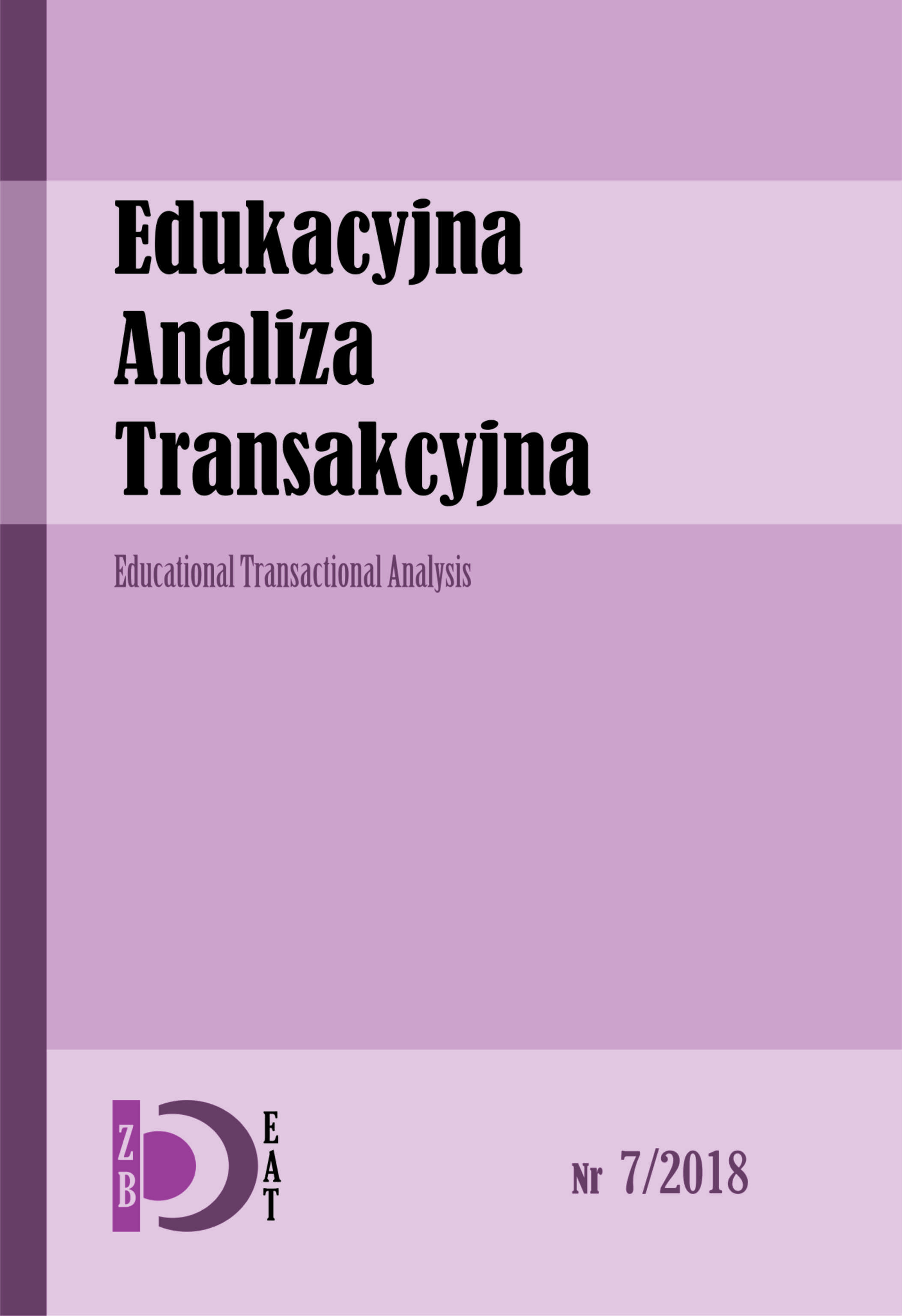Process Communication Model – an effective tool supporting education
- Authors
-
-
Agnieszka Woś-Szymanowska, mgr
-
- Keywords:
- personality adaptation, Process Communication Model, contact door, education, communication
- Abstract
-
The purpose of this article is to show the development of Taibi Kahler’s driver concept model (1975, pp. 280–284) and to demonstrate its usefulness. Research on drivers has provided the basis for developing the concept of personality adaptation (Joines, Stewart, 2002, pp. 4–5) and the Process Communication Model (Kahler, 2008, pp. 1–30; Collignon, 2017, pp. XV–XIX) – a complete model by Taibi Kahler, which allows for assessing personality. This model shows how to communicate with students effectively, in relation to their personality structure. It allows for using the right contact door to build a consensus (Ware, 1983, p. 11–12, 18). It is essential to recognize the type of Base and Phase, i.e. the currently experienced type, which allows for choosing the most effective communication channel, identifying the key psychological needs and including them in the process of teaching and motivating (Kahler, 2008, p. 45–81, 111–116; Collignon, 2017, p. 190–192).
- Downloads
-
Download data is not yet available.
- Author Biography
- Downloads
- Published
- 2018-12-30
- Issue
- No. 7 (2018)
- Section
- Transactional analysis in education
- License
-
AUTHOR'S STATEMENT
I am aware that the Educational Transactional Analysis journal is published under a Creative Commons license - Attribution (https://creativecommons.org/licenses/by/4.0/legalcode).
By submitting the article, I agree to make it available under this license
How to Cite
Similar Articles
- Zbigniew Wieczorek, Personality Traits in the Context of Transactional Analysis and Emotional Intelligence in Young Adults: A Research Report , The Educational Transactional Analysis: No. 13 (2024)
- Zbigniew Wieczorek, dr, Language of Change in Transactional Analysis , The Educational Transactional Analysis: No. 6 (2017)
- Anna Hady, Building relationships at school by responding to the individual needs of students and teachers using the Process Communication Model® , The Educational Transactional Analysis: No. 9 (2020)
- Paweł Plaskura, Education in the Era of Generative Artificial Intelligence: A Transactional Analysis Perspective , The Educational Transactional Analysis: No. 14 (2025)
- Justyna Józefowicz, Effective school in a crisis COVID-19 , The Educational Transactional Analysis: No. 10 (2021)
- Aleksandra Klupś, mgr, The concept of Communication Door as a tool to assist students in achieving educational success and to improve communication between participants in the educational process , The Educational Transactional Analysis: No. 7 (2018)
- Piotr Toczyski, The Potential of Educational Transactional Analysis for Human Rights Education , The Educational Transactional Analysis: No. 13 (2024)
- Katarzyna Adamczyk, Artificial intelligence in media education: potential, challenges and prospects , The Educational Transactional Analysis: No. 14 (2025)
- Ewa Wilczewska, Feedback as an educational tool to meet needs and an area of exchange of recognition signs , The Educational Transactional Analysis: No. 9 (2020)
- Zbigniew Wieczorek, Depression in the light of the Transactional Analysis theory – social media Big Data analysis , The Educational Transactional Analysis: No. 8 (2019)
You may also start an advanced similarity search for this article.
Most read articles by the same author(s)
- Agnieszka Woś-Szymanowska, Against injunctive messages - about defiant decision in response to injunctive message , The Educational Transactional Analysis: No. 8 (2019)

